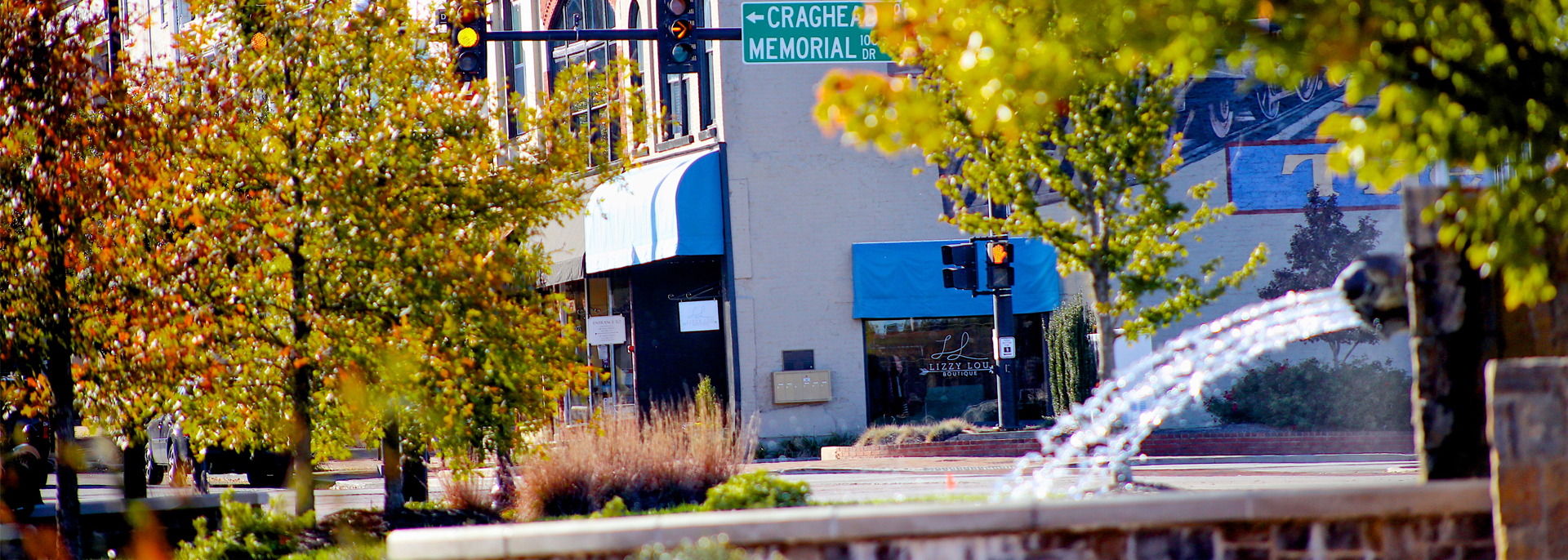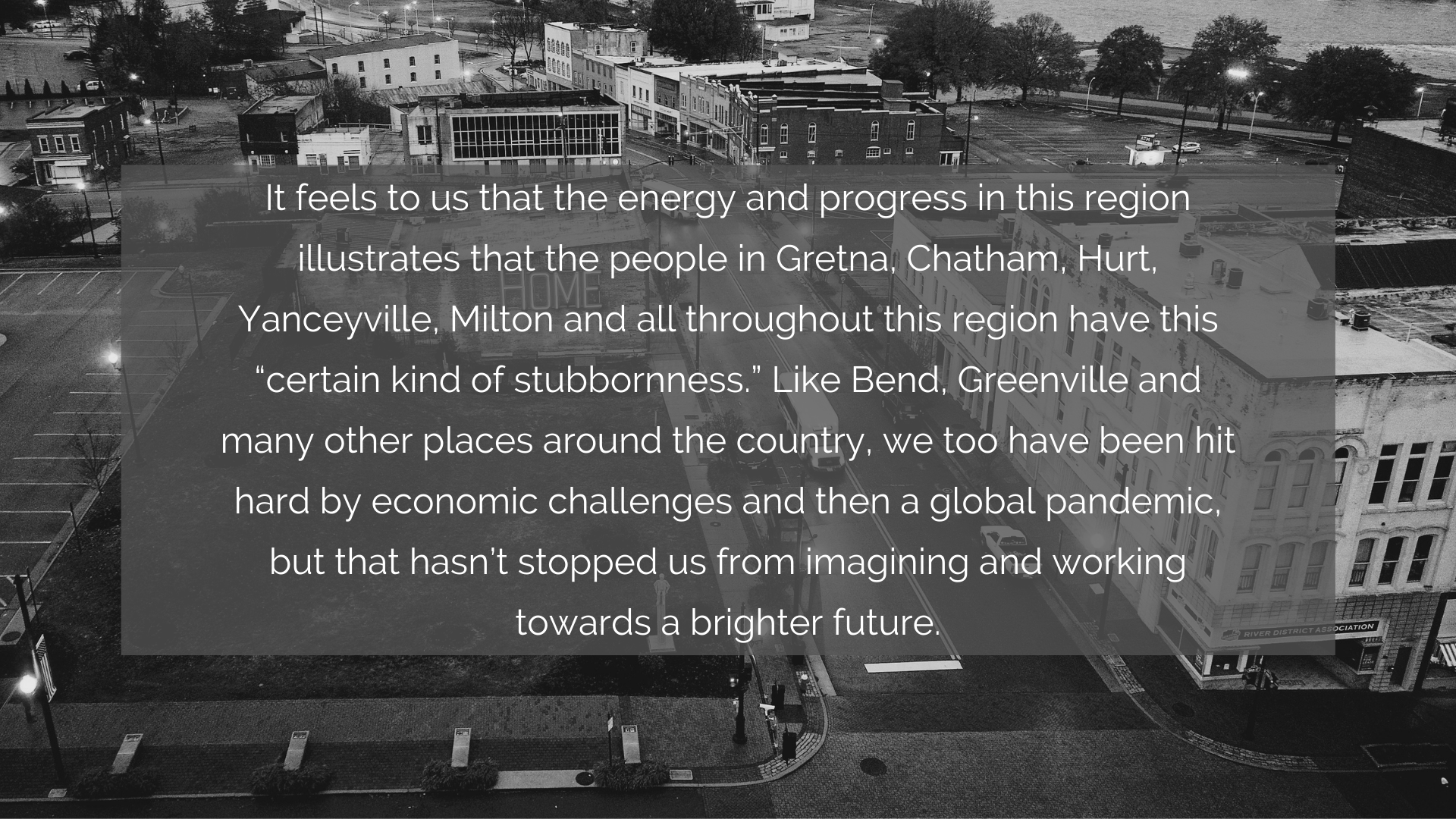

Sharing a Vision for the Future
By Clark Casteel
DRF CEO & President
Jim and Deb Fallows came to our region in fall of 2018 to talk about their then new book Our Towns: A 100,000-Mile Journey into the Heart of America. It’s a great book and available at your local library to check out. It’s a favorite of DRF.
The Fallows traveled across the country and visited 25 different communities. Their basic premise is that while we can all get frustrated and concerned when we think about the national challenges and dynamics, at the local level we can see things improving in communities.
Jim and Deb came and spent time in our region and as these seven posts on their blog reflect, they were really taken with a number of the things going on in our region.
HBO has a new documentary based on the Fallows’ book and they do a deep dive on eight places that were featured. It offers a number of examples for our region to learn from – everything from the importance of local newspapers and media, to public art, to building more successful schools, dealing with the opioid crisis and innovative models for working on housing and workforce challenges.
Part of the benefit of the book and documentary is to look at these models and what’s working in other places and see what we can learn from them to see if we can adapt and implement their lessons in our region.
But there are also a couple of broader themes that we think are equally important for us to consider.
Deb says in the documentary:
“On this journey, we’ve seen how towns have pulled themselves up in the past. We can learn from how they did it. Recovery takes working together. It’s harder in polarized times. But towns do it by focusing on local issues that are outside the division of national politics.”
This is a message we wrote about in the last blog post and talked about in our conversation with Bob Putnam and Shaylyn Romney Garrett. By working together and focusing on our community, this is how regional success happens.
Another broader theme we saw is in the final example from the documentary in Bend, Oregon. While Bend is flourishing in many ways now, they point out that if you look at their developmental curve, it’s taken years from the loss of the timber industry for them to reach the place they are now.
We can see this in other places that are models of revitalized communities: Greenville, South Carolina; Chattanooga, Tennessee; Dubuque, Iowa; and Tupelo, Mississippi.
It takes a while for this change to happen.
As much as we may want silver bullets that change things over night, it takes time, stubbornness and vision to make change happen.
As Jim said in the documentary:
“It seems wherever we go, people have a certain kind of stubbornness, even when things are dark they’re imagining a brighter future.”

It feels to us that the energy and progress in this region illustrates that the people in Gretna, Chatham, Hurt, Yanceyville, Milton and all throughout this region have this “certain kind of stubbornness.” Like Bend, Greenville and many other places around the country, we too have been hit hard by economic challenges and then a global pandemic, but that hasn’t stopped us from imagining and working towards a brighter future.
The last piece from the documentary I’ll share was from Dr. Raj Shaunak, the Vice President for Workforce Services at East Mississippi Community College (and, in full disclosure, an old friend of mine), Raj gives the finest description I’ve heard of how an effective community college has a deep impact on a community.
“This is highly technical, it’s not shop, the old vocational school was sometimes the penalty a person paid. We are a second chances for people, to get that high school equivalency, to get a job. Many individuals in our community are one flat tire away from losing their job or not finishing their education, we help bring partners to remove those barriers, we lift up the community as a whole.”
With this description, you know exactly why Raj and his colleagues get up every morning and do the work. They have a vision, they tell it broadly, boldly and they make it happen.
Do you know groups, organizations and individuals that have big dreams for this place? The ones that get up every morning knowing exactly what they’re going to work to change for the better in this region every day.
I bet you do, but I wonder if we’re sharing their stories broadly and boldly enough.
The continued transformation of our region requires that more people share these brighter visions, believe in the transformation of our community and know they are a part of this transformation.
Next Step: Share these stories.
We want you to share examples of people that are putting the transformation of their neighborhood, or community with us. What are they working to change? How are they doing it? What impact is it making?
And most importantly tell us how others can be involved and we’ll share some of your examples on our blog so more people will hear about them.